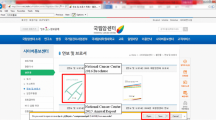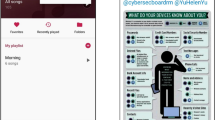Abstract
Despite the existing regulations and standards at national and international level, web content is still difficult to use, if not completely unusable, for visually impaired people. This paper presents the evaluation results for three municipal web sites. A combined method, based on conformance review and expert review, was employed. Overall, the results reveal a low conformance to WCAG2 and many accessibility and usability problems. The content is not properly structured, and this reduces usability even for sighted user. The analysis of the evaluation data suggests that many accessibility barriers could be avoided by adopting a user-centered approach during web design.


Similar content being viewed by others
References
Abascal, J., Arrue, M., Fajardo, I., Garay, N., Tomas, J.: The use of guidelines to automatically verify Web accessibility. Univers.Access.Inf.Soc. 3(1), 71–79 (2004)
ANPH Statistical Bulletin Q1. National Authority for Disabled Persons.(2011) Available at: http://www.anph.ro/admin/doc/upload/eng/21/Quarterly%20statistical%20Q3-2011.doc
Bastien, J.M.C. and Scapin, D.L. (1993) Evaluating a User Interface with Ergonomic Criteria INRIA Report, Roquencourt
Borodin, Y., Bighan, J., Dausch, G., Ramakrishnan, I.V. More than meets the eyw: a survey of screen reader browsing strategies. Proceedings of W4A 2010, ACM. Article No.5 (2010) doi:10.1145/1805986.1806005
Brajnik, G., Web accessibility testing: When the method is the culprit. In In Proc. of ICCHP 156–163 (2006)
Brajnik, G., Beyond conformance: The role of accessibility evaluation methods. Proc. of WISE 2008 Workshop, LNCS 5176, 63–80. (2008)
Cockton, G., Woolrych, A. Understanding inspection methods: lessons from an assessment of heuristic evaluation. Blandford, A., Vanderdonckt, J., Gray, P.D. (Eds.), Proceedings of People and Computers XV. Springer-Verlag, 171–182 (2001)
COM 694. European i2010 initiative on e-Inclusion. Commission of the European Communities (2007)
COM 8044 Towards an accessible information society. Commission of the European Communities (2008)
Cullen, K., Kubitschke, L., Meyer, I. Assessment of the status of eAccessibility in Europe. MeAC–Measuring Progress of eAccessibility in Europe (2007)
Cullen, K., Kubitschke, L., Boussios, T., Dolphin, C., Meyer, I. (2009). Study on Web accessibility in European countries: level of compliance with latest international accessibility specifications, notably WCAG 2.0, and approaches or plans to implement those specifications, European Commission
Fagan, J.C., Fagan, B.: An accessibility study of state legislative websites. Gov. Inf. Q 21, 65–85 (2004)
Fuertes H., Gutierrez E., Martinez L. Developing HeraFFX for WCAG 2.0. Proc. W4A 2011, Article No. 3, (2011) doi:10.1145/1969289.1969294
Iordache, D.D., Marinescu, R.D., Gheorghe-Moisii, M., Pribeanu, C. A case study in the formative usability evaluation of a local public administration website. Revista Romana de Interactiune Om-Calculator, 3(Special Issue–RoCHI 2010). 23–28 (2010)
ISO/IEC FCD 25010:2010. Software Engineering–Software product Quality Requirements and Evaluation (SQuaRE)–System and software quality models, JTC 1/SC 7 N4522, 2007
Lazar, J.: Investigating the accessibility and usability of job applications for blind users. J. Usabilit. Stud. 7(2), 68–87 (2012)
Kuzma, J.: Accessibility design issues with UK e-government sites. Govern. Inform. Q. 27, 141–146 (2010)
Leporini B. Google News: how user-friendly is it for the blind. Proc. ACM SIGDOC 2011, ACM, 241–248 (2011)
Leuthold, S., Bargas-Avila, J., Opwis, K.: Beyond web content accessibility guidelines: Design of enhanced text user interfaces for blind internet users. Int. J. Human-Comp. Stud 66, 257–270 (2008)
Marinescu, R.D. Municipal web sites accessibility: conformance evaluation against WCAG 2.0. Revista Romana de Interactiune Om-Calculator 5 (1), 55–72 (2012)
Molich, R., Nielsen, J.: Improving a human-computer dialogue. Commun. ACM 33(3), 338–348 (1990)
Nielsen, J.: Usability Engineering. Academic Press, New York (1993)
Nielsen, J.“Heuristic evaluation”. Nielsen, J., and Mack, R.L. (Eds.), Usability Inspection Methods, John Wiley & Sons, New York. (1994)
Nietzio, A., Olsen, M.G., Eibegger, M., Snaprud, M. Accessibility of eGovernment websites: towards a collaborative retrofitting approach. Computer Helping People with Special Needs, LNCS 6179, 468–475, Springer (2010)
Obrad, C., Petcu, D., Gherhes, V., Suciu, S.: Corporate Social Responsibility in Romanian Companies–between Perceptions and Reality. Amfiteatru. Economic XIII 29, 43–55 (2011)
Olsen, M.G. How Accessible is the Public EuropeanWeb. (2008) Available at: http://www.mortengoodwin.net/publicationfiles/how_accessible_is_the_european_web.pdf. Accessed 27.01.2012
Pernice, K., Nielsen, J. (2001) Beyond ALT text: Making the web easy to use for users with disabilities. Nielsen Norman Group. Available at http://www.nngroup.com/reports/accessibility. Accessed: 10 January 2012
Pribeanu, C., Marinescu, R.D., Fogarassy-Neszly, P., Gheorghe-Moisii, M.: Web accessibility in Romania: the conformance of municipal websites to web content accessibility guidelines. Inform. Econom. J 16(1), 28–36 (2012)
Pribeanu, C., Marinescu, R.D., Iordache, D.D., Gheorghe-Moisii, M.: Exploring the usability of municipal web sites: A comparison based on expert evaluation results from four case studies. Inform. Econom. J 14(4), 87–96 (2010)
Riga Ministerial Declaration, Riga, Latvia. (2006) Available at: http://ec.europa.eu/information_society/events/ict_riga_2006/doc/declaration_riga.pdf
Ruth-Jannek, D. An integrative accessibility engineering approach using multidimensional classifications of barriers in the web. Proceedings of W4A2007, ACM, 41–44 (2011)
Stephanidis, C., Akoumianakis D. A design code of practice for universal access: Methods and techniques. Proctor R, Wu, K. (Eds.) Human Factors in Web Design, LEA, 251–266. (2005)
Takagi, H., Saito, S., Fukuda, K., Asakawa, C. Analysis of Navigability of web applications for improving blind usability. ACM Transactions on Computer-Human Interaction, Vol.14 no. 3, Art 13 (1–36) (2007)
Total Validator. Available at: http://www.totalvalidator.com/
UsiXML: Uses Interface Extensible Markup Language, ITEA2 Project 08026, Available at: http://www.usixml.eu. Accessed 27.01.2012
Vanderdonckt J. Model driven engineering of user interfaces: promises, successes, failures and challenges. Proc. RoCHI 2008, MatrixRom, 1–10 (2008)
Vigo, M., Brajnik, G.: Automatic web accessibility metrics: where we are and where we can go. Interact. Comput. 23, 137–155 (2011)
WAI (1997) Web Accessibility Initiative, W3C. Available at: http://www.w3.org/WAI/
Watanabe, T.: Experimental evaluation of usability and accessibility of heading elements. Disabil. Rehabil. 4(4), 236–247 (2009)
WCAG1 (1999) Web Content Accessibility Guidelines 1.0, W3C, 1999. Available at: http://www.w3.org/TR/WCAG10/
WCAG2 (2008) Web Content Accessibility Guidelines 2.0, W3C, 2008. Available at: http://www.w3.org/TR/WCAG20/
Yesilada, Y., Brajnik, G., Harper, S.: Barriers to mobile and disabled web users. Interact. Comput. 23, 525–542 (2010)
Acknowledgments
This work was carried on in the framework of the Eureka Cluster ITEA2 European project USIXML (08026) funded by UEFISCDI under the PNCDI II Innovation Program 294E.
Author information
Authors and Affiliations
Corresponding author
Rights and permissions
About this article
Cite this article
Pribeanu, C., Fogarassy-Neszly, P. & Pătru, A. Municipal web sites accessibility and usability for blind users: preliminary results from a pilot study. Univ Access Inf Soc 13, 339–349 (2014). https://doi.org/10.1007/s10209-013-0315-2
Published:
Issue Date:
DOI: https://doi.org/10.1007/s10209-013-0315-2




